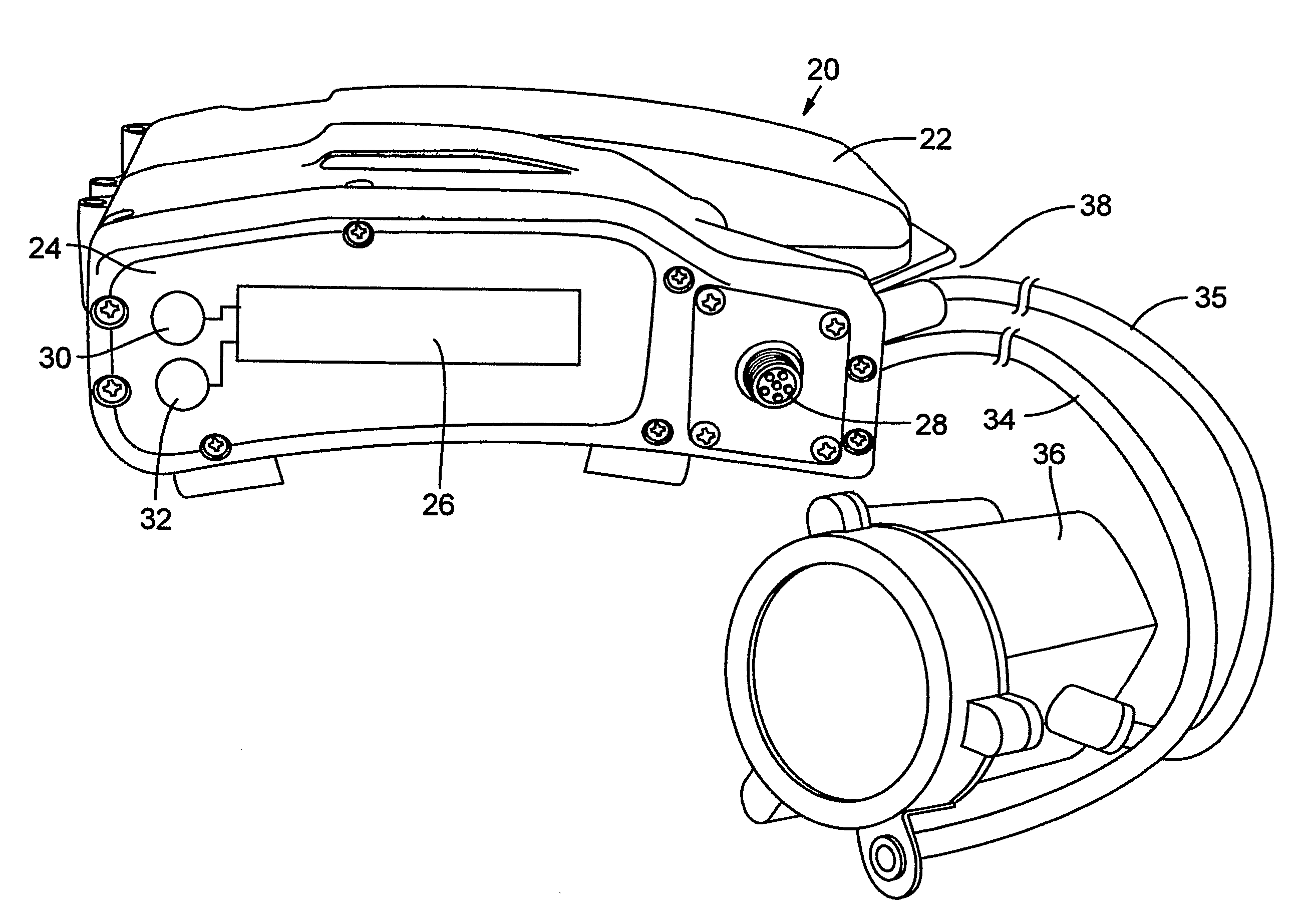Monitor and methods for characterizing airborne particulates
a technology of airborne particulates and monitors, applied in the field of dust monitors, can solve the problems of not being able to perform certain advantageous types of accurate spectroscopic analysis on the filters used, materials cannot be readily subjected to thermal or chemical destruction, and the filter and/or its mounting platform are not readily subjected to low-temperature ashing, so as to reduce the relative humidity of the air, minimize the dislocation of particles, and minimize the effect of handling time and effor
- Summary
- Abstract
- Description
- Claims
- Application Information
AI Technical Summary
Benefits of technology
Problems solved by technology
Method used
Image
Examples
example 1
Spectrometry
[0072]Spectroscopy or spectrometry is the science of recording the spectra and measuring the absorption or emission of different wavelengths of visible or nonvisible light for materials of interest. This can be done via a spectrometer, which may contain slits, prisms, gratings, collimating and object lenses, mirrors, interferometers, light sources, light detectors, or a variety of other components appropriate for the method involved. Absorbance spectroscopy involves exposing a sample to a source of light and determining what portion of the light intensity emerges from the sample, with the remainder being absorbed. Reflectance spectroscopy is a variation in which the reflected intensity of light is measured. Emission spectroscopy involves obtaining spectral information by exciting a sample to be analyzed to spectroemissive levels. Material samples may be simple or complex, containing only one or many analytes of interest. Qualitative spectroscopy generally seeks to detect...
example 2
Filters for Determination of Quartz in Collected Dust
[0083]Quartz analysis of coal mine dust has been performed in the past by collecting samples on 37-mm-diameter 5.0-μm-pore polyvinylchloride (PVC) membrane filters, using standard cassettes designed for air sampling in mines. The Mine Safety and Health Administration employs its P-7 method of analysis, which involves low-temperature ashing of the PVC sample filters (for example at 250-500° C.) and redepositing the ash onto PVC-Acrylic (PVCA) membrane filters, by means of an isopropyl alcohol (IPA) suspension. The redeposited samples are then examined in a Fourier transform infrared (FTIR) spectrometer. Through appropriate calibration procedures, the FTIR output is used to quantify the mass of quartz in the samples. The method includes a correction for kaolin clay, a common mineral interferent that may be found in coal dust samples.
[0084]Existing TEOM and PDM filters are inherently different from PVC membranes in regard to structur...
example 3
Quartz Analysis with Open Face Collected Samples
[0099]This example illustrates two variations of the nylon fiber filter, one with a cellulose support backing, the other with a polyester backing (having product designations N1840 and N1841, respectively).
[0100]Prototype PDM filter assemblies were fabricated using both cellulose- and polyester-backed nylon fiber mats. Particulate collection from air suspension was chosen as the means for introducing controlled masses of quartz onto these filters for trial analyses. A direct open-face collection method was used in initial collections to avoid any complicating factors that collection through an actual PDM might introduce. Utilization of PDMs for quartz collection was reserved for a subsequent set of tests.
[0101]Two test runs were performed in a Marple chamber (ELPRAM Systems Inc., Minneapolis, Minn.), using Minusil-5 quartz dust (U.S. Silica Company, Berkeley Springs, W. Va.). The chamber generates a dust source using a model 3400 fluid...
PUM
| Property | Measurement | Unit |
|---|---|---|
| mass | aaaaa | aaaaa |
| flow rate | aaaaa | aaaaa |
| constant temperature | aaaaa | aaaaa |
Abstract
Description
Claims
Application Information
 Login to View More
Login to View More - R&D
- Intellectual Property
- Life Sciences
- Materials
- Tech Scout
- Unparalleled Data Quality
- Higher Quality Content
- 60% Fewer Hallucinations
Browse by: Latest US Patents, China's latest patents, Technical Efficacy Thesaurus, Application Domain, Technology Topic, Popular Technical Reports.
© 2025 PatSnap. All rights reserved.Legal|Privacy policy|Modern Slavery Act Transparency Statement|Sitemap|About US| Contact US: help@patsnap.com



